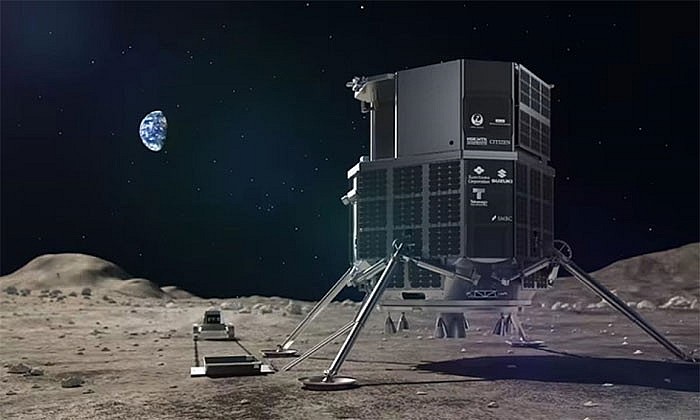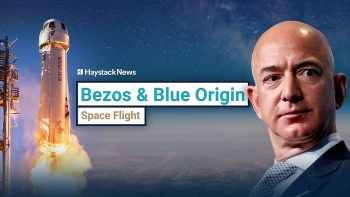Most Exciting Events In Space To Look Forward 2023
 |
| Most Exciting Projects To Watch For In Space In 2023 |
The year 2023 could see significant advances in human spaceflight, including the first spacewalks, new trips to other points in the Solar System.
Travel to the Moon
A rover will reach the Moon in early 2023. On December 11, 2022, Japan's Hakuto-R lander carrying the UAE's Rashid rover set off to the Moon using SpaceX's launch system. Instruments mounted on top of a Falcon 9 rocket were launched from Cape Canaveral Air Force Station in Florida, USA.
According to ispace - a company in Tokyo, the Hakuto-R spacecraft is expected to land on the Moon around March 2023. If successful, Hakuto-R could become the first private lander to complete a mission to the Moon in 2023.
In addition, two private US landers, Astrobotic's Peregrine and Intuitive Machines' Nova-C, are also set to launch to the Moon at the same time.
Both are NASA-supported missions with various onboard instruments to study the environment on the Moon, part of the agency's Commercial Lunar Payload Service program, which aims to promote commercial interests on the Moon.
"The moon is getting more attention over the years," said Jon Cowart, an expert at NASA, now working at the Aerospace Corporation in the US.
Intuitive Machines has planned to send a lander to land a second time on the Moon in 2023. The space agencies of India and Japan also plan to send a lander to the Moon next year. India hopes to launch the Chandrayaan-3 lander in August 2023.
This will be the country's second attempt to land a lander on the Moon, with the first being in 2019. Meanwhile, Japan has yet to set a date for the launch of the SLIM lander to the Moon. In 2023, Russia is also said to have plans to put the Luna-25 lander on Earth's only natural satellite.
Private Space Fight
Since May 2020, SpaceX has used the Crew Dragon spacecraft to send astronauts to space, some of which have been sent to the International Space Station (ISS) under a contract with NASA and others. others carry out their own missions.
However, SpaceX's Polaris Dawn mission, which is being planned for March 2023, will be a big step forward. For the Polaris Dawn project, the crew is expected to go deeper into space than any previous Crew Dragon spacecraft mission.
The Polaris Dawn flight of four commercial astronauts will aim for a maximum Earth orbit of 1,200 km, higher than any human spacecraft since the Apollo missions.
The mission could help NASA decide whether a future mission could be used to service the Hubble Space Telescope, a possibility the agency is working on with SpaceX.
Axiom-2 and Axiom-3, two other private spaceflights using the Crew Dragon spacecraft, are also scheduled to fly to the ISS in 2023.
Many experts are also looking forward to the return of Blue Origin - the aerospace company of US billionaire Jeff Bezos in the race to space. The company ceased operations after an unsuccessful rocket launch in September 2022.
However, all the developments in commercial human flight into space could be overshadowed by SpaceX's massive and reusable Starship rocket's first orbital attempt. The Starship rocket is undergoing launch pad tests in early December and will launch in 2023, and possibly late 2022.
If successful, the rocket will pass NASA's Space Launch System as the largest rocket to orbit, possibly changing the course of human space exploration.
“The ability to increase mass to orbit opens up new opportunities. That could include human missions to Mars or beyond. But there is still a long way to go. 2023 is definitely an important year for Starship,” said Uma Bruegman, an expert on space strategy at the US nonprofit Aerospace Corporation.
Other locations of the Solar System
New trips to other points in the Solar System are also something that will receive a lot of attention in 2023.
April 2023 will see a new mission by the European Space Agency (ESA) called JUICE, with the mission to explore Jupiter's icy moon. Scheduled to orbit Jupiter in 2031, the JUICE spacecraft will make detailed studies of the moons Ganymede, Callisto and Europa, all of which are thought to have potentially life-bearing oceans beyond. below the icy surface.
“This is the first mission to essentially focus on icy Moons. We may know these icy moons have very deep oceans and they may have the conditions for life to thrive," said Mark McCaughrean, senior adviser for science and exploration at ESA, in a statement. know.
Later in 2023, the ESA is scheduled to have another important mission, which is to launch the Euclidean space telescope to search for dark matter.
In October 2023, NASA will launch an important science mission to explore 16 Psyche, a massive asteroid located in the Asteroid Belt. 16 Psyche makes up 1% of the entire belt's mass and is speculated to be the core of an ancient planet. This is a metal shoe asteroid, with lots of iron, nickel, and gold.
NASA's OSIRIS-REx mission is scheduled to return to Earth in September 2023 with samples from the asteroid Bennu. Amazon aims to send the first satellites to Project Kuiper as early as 2023, the start of a 3,000-satellite orbital communications network that it hopes will rival SpaceX's Starlink satellite internet service.
“There is a lot of activity in space next year. I'm very excited about this," Cowart said.
 Less or High Risk for Jeff Bezos's Blue Origin Space Flight? Less or High Risk for Jeff Bezos's Blue Origin Space Flight? Blue Origin's first human launch with Jeff Bezos: Who are crew members, How to Watch Live, When and Where to Launch, High Risk or Less ... |
 Where Are the Apollo 14' 'Moon Trees' on Earth Today? Where Are the Apollo 14' 'Moon Trees' on Earth Today? In the 70s, humans had a bold idea when carrying seeds on a space trip, and then returning to plant them on Earth. |
 Can Planets Collide In Space? Can Planets Collide In Space? People on Earth often ask: Can planets collide with one another? Short answer: Yes, but very rarely! |























